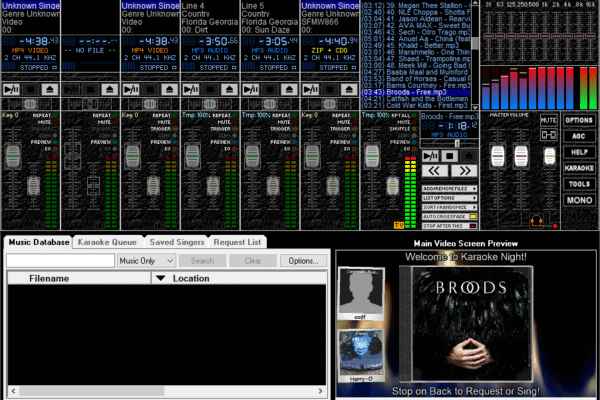How Developers Benefit from the White Screen Tool: A Feature Overview

In the fast-evolving landscape of software development, tools that enhance productivity, streamline debugging, and improve the user experience are invaluable. Among these is the white screen tool, a resource increasingly being used by developers to identify issues, refine front-end performance, and simulate minimal UI environments. This article dives deep into the features of the white screen tool, explaining its significance, functionality, and the various ways it serves developers across different stages of the development process.
What is a White Screen Tool?
The white screen tool is primarily designed to help developers simulate and analyze scenarios where a web or application interface displays a blank or white screen. Such screens typically indicate a front-end rendering issue or a critical JavaScript error. Developers use this tool to troubleshoot the root cause of the blank screen and correct errors that may go unnoticed during traditional testing.
Unlike full-fledged debuggers or integrated development environments (IDEs), the white screen tool is lightweight and focused on a specific yet crucial area—render failure detection. By isolating the rendering process and stripping away interface distractions, it helps pinpoint where the application breaks, especially during the loading or transition phases.
Core Features of the White Screen Tool for Developers
Simplified Debugging Interface
One of the most significant advantages of the white screen tool is its clean and distraction-free environment. By reducing the UI down to a basic white screen, it allows developers to focus entirely on the functional logic behind the visuals. This is especially helpful in identifying rendering conflicts caused by JavaScript, incorrect dependencies, or broken components in frameworks like React, Angular, or Vue.js.
Error Stack Tracing
The white screen tool often comes with a built-in error stack display that captures and presents real-time JavaScript errors. Instead of forcing developers to dig through console logs or browser developer tools, it offers a straightforward list of exceptions, warnings, and failed calls that contribute to the white screen issue. This feature saves time and simplifies the debugging process.
Simulated Rendering Failures
Developers can use the white screen tool to intentionally simulate rendering failures. This is valuable for stress-testing applications and assessing how robust the error-handling mechanisms are. It helps ensure that the application can gracefully recover from errors without crashing the user interface or degrading the user experience.
Environment-Specific Testing
Different browsers, devices, and environments can trigger different types of white screen errors. A high-quality white screen tool allows developers to test in various environments—desktop, mobile, and even specific OS configurations. This multi-environment testing ensures consistent performance and helps developers tackle platform-specific bugs effectively.
Integration with CI/CD Pipelines
For development teams practicing continuous integration and continuous deployment (CI/CD), the white screen tool can often be integrated into automated testing workflows. This enables early detection of UI crashes before they reach production, significantly reducing downtime and improving user trust.
Lightweight and Performance-Oriented
Unlike full development suites that are resource-heavy, the white screen tool is typically light on system usage. It does not interfere with application logic or burden the system with unnecessary background processes. This makes it ideal for quick checks and routine testing without the need for extensive configuration or system strain.
How Developers Use the White Screen Tool
Diagnosing JavaScript Failures
When a website or application fails to load correctly, it may result in a white screen with no visual indicators of what went wrong. The white screen tool allows developers to dissect these issues by isolating JavaScript scripts and identifying which one is responsible for the failure. Whether it’s a missing module, failed async function, or corrupted data, the tool offers a clear path to resolution.
Testing Component-Level Breakpoints
Modern web applications are built using component-based architectures. A failure in one component can cascade and affect the whole application view. Developers can use the white screen tool to test individual components in isolation and ensure they render correctly before integrating them into larger modules.
Code Refactoring and Regression Testing
Refactoring old code or updating a third-party library can sometimes introduce unexpected UI issues. The white screen tool helps developers perform regression testing by offering a visual confirmation of component behavior. If a white screen appears post-refactor, it becomes immediately obvious that further adjustments are needed.
Progressive Web App (PWA) Validation
PWAs often load resources differently compared to standard web apps, especially during offline mode or first load. The white screen tool helps verify that fallback strategies are working correctly, and that the PWA does not default to a blank screen when network resources are unavailable or cached incorrectly.
Advantages of Using a White Screen Tool
Early Bug Detection
One of the most compelling benefits of using a white screen tool is its ability to detect errors before they affect end users. By catching rendering issues early in development or during staging, developers can eliminate critical bugs that would otherwise result in a poor user experience.
Enhanced Front-End Resilience
With front-end development becoming increasingly complex, ensuring stability across various devices and browsers is essential. The white screen tool supports this by helping developers build robust UIs that do not easily break under edge-case scenarios.
Time Efficiency
Debugging front-end errors can be notoriously time-consuming, especially when issues are not immediately visible. The white screen tool streamlines this process by offering clear, actionable insights, drastically reducing the time spent hunting for bugs.
Collaboration Support
For teams working in collaborative environments, the white screen tool enables shared visibility into UI failures. Teams can replicate issues, share logs, and collectively work toward resolving them without duplicating efforts or misinterpreting the source of the problem.
Choosing the Right White Screen Tool
Not all white screen tools offer the same level of functionality. When selecting one, developers should look for features such as customizable test conditions, multi-device compatibility, integration options with their current workflow, and a user-friendly interface. Popular tools often come with community support, documentation, and plug-ins to extend functionality.
It’s also essential to ensure that the tool aligns with the development stack being used. A tool optimized for React may not perform as well in an Angular or Vue environment unless it’s designed to be framework-agnostic.
Final Thoughts
The white screen tool is more than just a utility for identifying blank page errors. It represents a strategic advantage for developers who want to build stable, responsive, and bug-resistant applications. From real-time diagnostics to environment simulation and CI/CD compatibility, its features cater to both individual developers and collaborative teams aiming for high-quality front-end performance.


